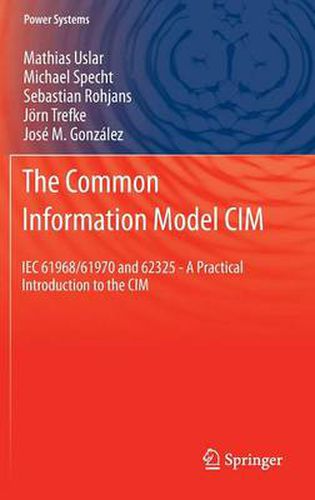Readings Newsletter
Become a Readings Member to make your shopping experience even easier.
Sign in or sign up for free!
You’re not far away from qualifying for FREE standard shipping within Australia
You’ve qualified for FREE standard shipping within Australia
The cart is loading…






This title is printed to order. This book may have been self-published. If so, we cannot guarantee the quality of the content. In the main most books will have gone through the editing process however some may not. We therefore suggest that you be aware of this before ordering this book. If in doubt check either the author or publisher’s details as we are unable to accept any returns unless they are faulty. Please contact us if you have any questions.
Within the Smart Grid, the combination of automation equipment, communication technology and IT is crucial. Interoperability of devices and systems can be seen as the key enabler of smart grids. Therefore, international initiatives have been started in order to identify interoperability core standards for Smart Grids.
IEC 62357, the so called Seamless Integration Architecture, is one of these very core standards, which has been identified by recent Smart Grid initiatives and roadmaps to be essential for building and managing intelligent power systems. The Seamless Integration Architecture provides an overview of the interoperability and relations between further standards from IEC TC 57 like the IEC 61970/61968: Common Information Model - CIM.
CIM has proven to be a mature standard for interoperability and engineering; consequently, it is a cornerstone of the IEC Smart Grid Standardization Roadmap. This book provides an overview on how the CIM developed, in which international projects and roadmaps is has already been covered and describes the basic use cases for CIM. This book has been written for both Power Engineers trying to get to know the EMS and business IT part of Smart Grid and for Computer Scientist finding out where ICT technology is applied in EMS and DMS Systems. The book is divided into two parts dealing with the theoretical foundations and a practical part describing tools and use cases for CIM.
$9.00 standard shipping within Australia
FREE standard shipping within Australia for orders over $100.00
Express & International shipping calculated at checkout
This title is printed to order. This book may have been self-published. If so, we cannot guarantee the quality of the content. In the main most books will have gone through the editing process however some may not. We therefore suggest that you be aware of this before ordering this book. If in doubt check either the author or publisher’s details as we are unable to accept any returns unless they are faulty. Please contact us if you have any questions.
Within the Smart Grid, the combination of automation equipment, communication technology and IT is crucial. Interoperability of devices and systems can be seen as the key enabler of smart grids. Therefore, international initiatives have been started in order to identify interoperability core standards for Smart Grids.
IEC 62357, the so called Seamless Integration Architecture, is one of these very core standards, which has been identified by recent Smart Grid initiatives and roadmaps to be essential for building and managing intelligent power systems. The Seamless Integration Architecture provides an overview of the interoperability and relations between further standards from IEC TC 57 like the IEC 61970/61968: Common Information Model - CIM.
CIM has proven to be a mature standard for interoperability and engineering; consequently, it is a cornerstone of the IEC Smart Grid Standardization Roadmap. This book provides an overview on how the CIM developed, in which international projects and roadmaps is has already been covered and describes the basic use cases for CIM. This book has been written for both Power Engineers trying to get to know the EMS and business IT part of Smart Grid and for Computer Scientist finding out where ICT technology is applied in EMS and DMS Systems. The book is divided into two parts dealing with the theoretical foundations and a practical part describing tools and use cases for CIM.